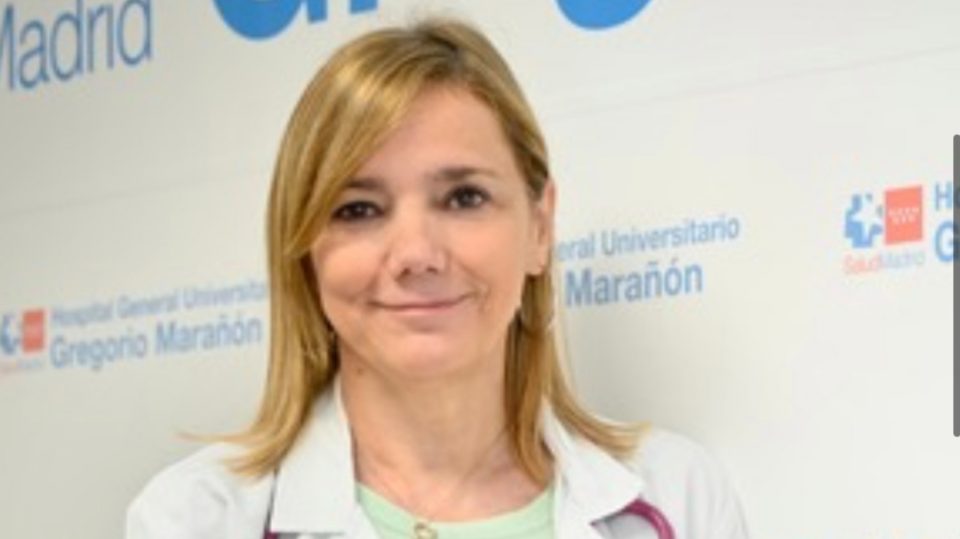“Children are important vectors of influenza transmission”

“At this time of year, the child population suffers from respiratory pathologies, especially bronchiolitis and influenza”
“Nirsevimab is a monoclonal antibody, it is not a vaccine, so we are talking about immunization, not vaccination.”

Pediatrics It is an essential medicine from conception to adolescence. This specialty deals with everything related to the care of healthy newborns, children and adolescents, as well as the methods of total and continuous comprehensive medical care for children and adolescents in sick conditions.
Head of the pediatric hospital Hospital Infantil Gregorio Marañon, MD of the Autonomous University of Madrid and Associate Professor of Pediatrics at UCM since 2017, Rosa Mª Rodriguez Fernandez, will speak in ABOUT HEALTH about the changes that have occurred in recent years in Spanish pediatrics, about the main pathologies that children suffer from, and about seasonal diseases such as bronchiolitis or influenza, which are especially common throughout the country this winter.
Question: Is this winter particularly difficult for children due to seasonal illnesses such as bronchiolitis and influenza?
Answer:- It is an epidemic and seasonal disease occurring every year between October and March. Most cases of bronchiolitis during the epidemic period are caused by respiratory syncytial virus (RSV). It primarily affects pediatric children in the first year of life and causes respiratory symptoms that sometimes require hospitalization for oxygen and respiratory support.
Each season, during the colder months, we see a significant increase in health care activity at medical centers, emergency services, and hospitals related to the respiratory syncytial virus bronchiolitis epidemic. In 2020, coinciding with the Covid-19 pandemic, something unexpected happened: the virtual disappearance of this virus during the winter and its reappearance outside the colder months in the summer of 2021. This was likely due to the use of masks and social distancing during the pandemic. Subsequently, the respiratory syncytial virus gradually regained its seasonality and in the last season of 2022-2023 we had a significant epidemic of bronchiolitis in winter.
True, this season 2023-2024. is that the epidemic was much milder, and significantly fewer cases were admitted to hospitals.
Q: How has infant immunization changed with the introduction of the new RSV vaccine for newborns?
A. – Nirsevimab is a monoclonal antibody, it is not a vaccine, so we are talking about immunization, not vaccination. It is a monoclonal antibody directed against the surface fusion protein of RSV F. It has been shown in clinical trials to be effective and safe in infants, and has the advantage of a long half-life, meaning that with a single dose at the beginning of the epidemic in October, infection is prevented during the 5 months it lasts.
This year, for the first time, this monoclonal antibody was administered to children under 6 months of age at the beginning of the season in October, as well as to all newborns between October and March and, of course, to all patients at risk: heart defects, premature babies, bronchopulmonary dysplasia and other groups. The truth is that the situation in medical centers this winter was very different from previous ones. The number of children hospitalized for RSV bronchiolitis has decreased significantly, so we can say that the epidemic is much milder than in previous years. The majority of children hospitalized with RSV infection were unimmunized children or older than 6 months.
Q.- What general measures can be taken to prevent bronchiolitis?
A: Among the general measures to prevent RSV bronchiolitis, we can focus on promoting breastfeeding, avoiding second-hand smoke in children, avoiding large crowds and large gatherings when there are infants at home, and ensuring proper hand hygiene.
Q. – How should we deal with children if they are the main carriers of influenza among vulnerable populations?
A. – It is known that children are important carriers of influenza, but they also get it, sometimes with severe symptoms. This season, the vaccine advisory committee of the Spanish Pediatric Association recommends influenza vaccination for all children aged 6 to 59 months, as well as for risk groups. Influenza vaccination is also recommended for children living with at-risk adults. Therefore, the best measure is to get vaccinated against influenza.
Question: What diseases do children end up in hospitals with?
A.-At this time of year it is mainly respiratory pathologies, especially bronchiolitis and influenza.
Question: New treatments, artificial intelligence… Are innovations and pharmacological advances reaching this population?
A.- As for respiratory syncytial virus and bronchiolitis, developments are mainly in the field of prevention and there are two of them: monoclonal antibodies with a long half-life (nirsevimab) and maternal vaccination against RSV for the prevention of this virus in newborns in the first months of life .
In general, in addition to respiratory viral infections, in the coming years in pediatrics we will see advanced cellular and gene therapies in various fields: pediatric oncohematology, neuropediatrics, etc. On the other hand, some advanced treatments in pediatrics have already become a reality, e.g. CAR-T therapy in the field of oncohematology, therapy based on CRISPR technology or gene therapy for neurological pathologies. Of course, advanced treatments will be an important change in our specialty.